Bath, the most beautiful city in England
Our visit to the Cotswolds and the valley of the Avon River inevitably leads to beautiful Bath. The World Heritage Site is not only home to one of the best-preserved Ancient Roman archaeological sites. Bath is also home to some of the most beautiful architectural monuments in the world, such as the Royal Crescent and Pulteney Bridge. We put on a pair of sturdy walking shoes and begin our tour of the fascinating city.
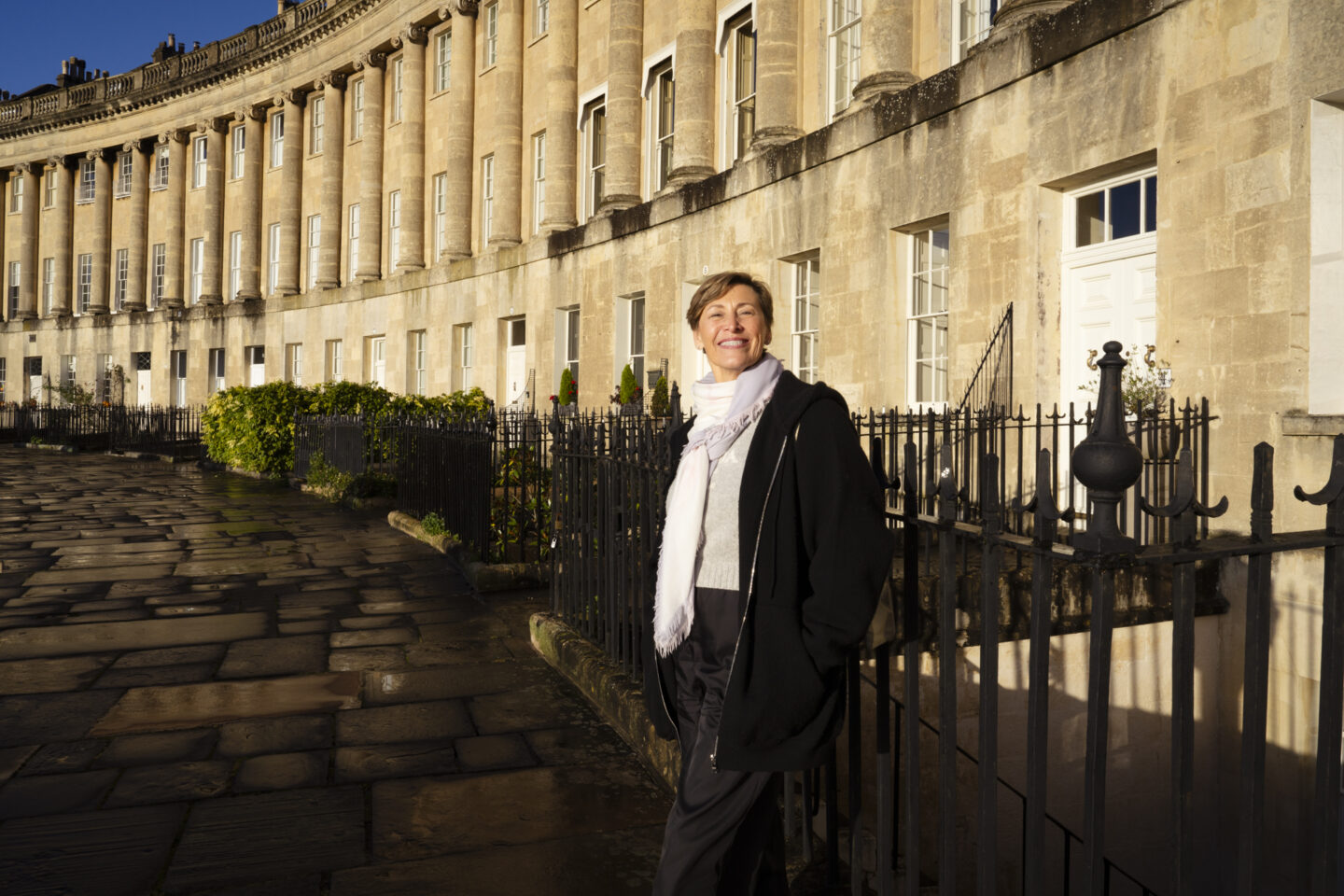
Aquae Sulis, a Roman settlement
The site of Aquae Sulis, the Roman name for the city of Bath, was known for its natural hot springs long before the Romans arrived. The Celtic prince Bladud discovered the springs in the 9th century BC. According to legend, he suffered from leprosy and was banished from the royal court. He wandered the countryside as a pig herder and stumbled upon a steaming swamp. When the pigs emerged clean and healthy from the muddy water, Bladud himself jumped into the warm sludge. He clambered out, completely free of disease. The Celtic king was very grateful and dedicated the healing powers of the springs to Sulis, goddess of healing.
The first Romans soon occupied the fertile areas of southern England in the 1st century AD, and the sacred spring of Sulis was swallowed up along with the conquered territory. The Romans were a God-fearing people and did not want to displease the gods of the local tribes. They kept the name Sulis and associated it with their own goddess Minerva, as a symbol of reconciliation.

The Roman Baths
Aquae Sulis did not become a military fortress like the other Roman settlements. The Romans had extensive knowledge of hydraulic engineering and drained the swamps around the spring. They built a large reservoir and captured the warm water. Around the spring they created several baths where they directed the water through an ingenious system of lead pipes. The site eventually expanded into a true center of well-being and relaxation with hot and cold baths, saunas, massage rooms and fitness areas. Men and women came here to relax with family and friends but also to discuss political, military or trade matters. Next to the baths, the Romans also built a temple dedicated to the goddess Sulis Minerva.
Amazingly, a great deal of the Roman Baths remained. The Great Bath, where people bathed 2,000 years ago, is almost intact. During your visit, you will learn about the lifestyle of the Ancient Romans, their knowledge of engineering, the goddess Sulis Minerva and about the spring itself. You will step on Roman pavements and get the chance to taste the healing water of the spring. I'm not saying it tastes delicious!
The Roman Baths are no longer in use, but you can visit the modern Thermae Bath Spa for a dip in the healing waters.
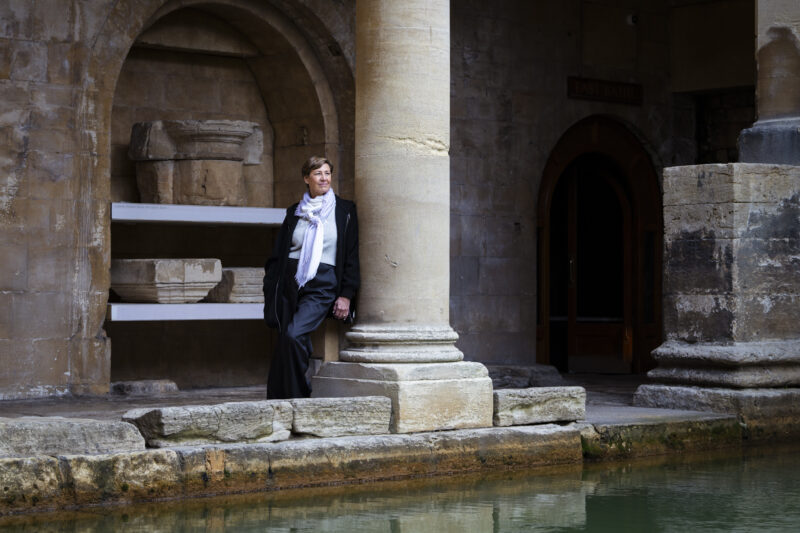
Bath Abbey
In the very heart of the city, right next to the Roman Baths stands Bath Abbey, an imposing building with a history of more than 1,300 years. This is the place where the first English king was crowned, and where three churches stood previously. What used to be a Benedictine monastery is now a medieval church dedicated to St. Peter and Paul. The cathedral-like building is built of Bath stone, the local honey-colored limestone. Bath was a rich city at the time thanks to the trade in Cotswold wool. This wealth is reflected in the multi-colored stained-glass windows and the beautiful fan vault of the nave. Like many churches in England, Bath Abbey is still a vibrant parish.
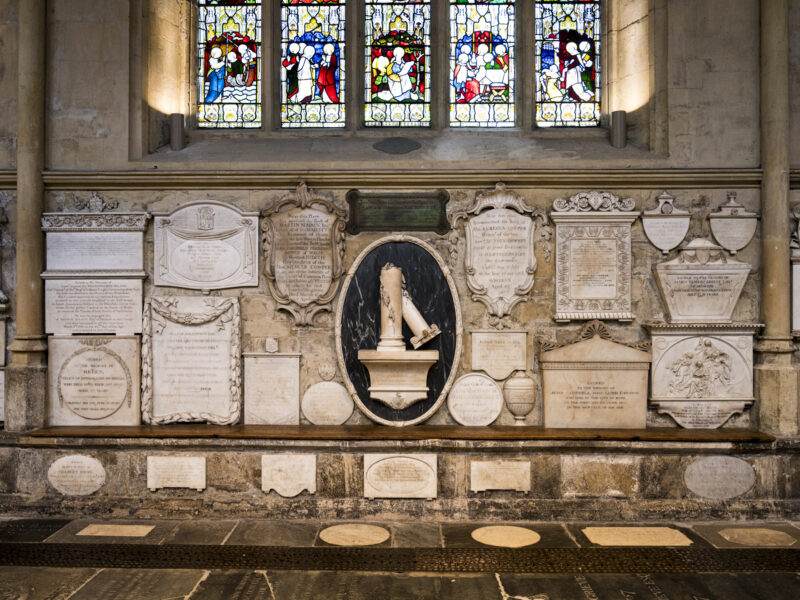
Pulteney Bridge
When William Johnstone and his wife Frances Pulteney inherited Lord Bath's fortune in the mid-18th century, they became the proud owners of a 240-hectare estate separated from the city of Bath by the Avon River. They wanted to develop the area into a suburb of Bath and commissioned neoclassical architect Robert Adam to build a bridge. Adam drew inspiration from the Ponte Vecchio in Florence and designed a bridge with stores on both sides of the span. The Pulteney Bridge is now a cozy part of town with coffee houses and souvenir shops. The best view of the bridge is off Pulteney Weir. This barrier changed the level of the Avon and provided hydraulic power for the mills.
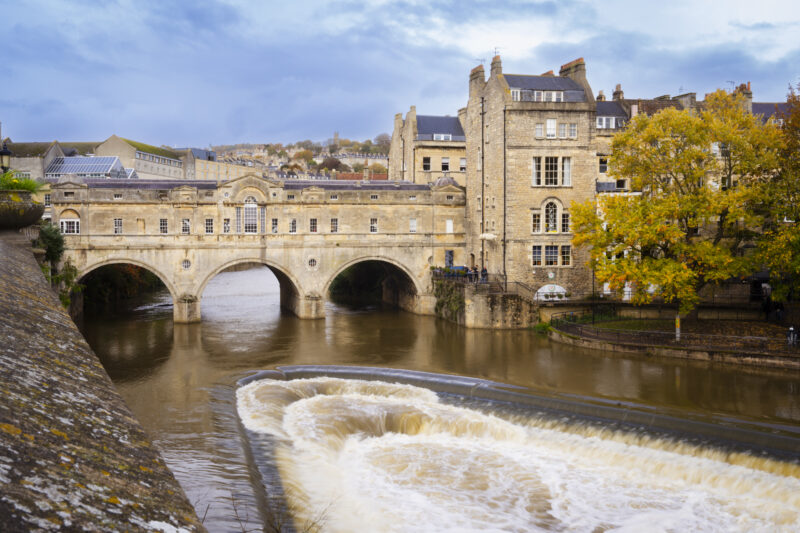
The Royal Crescent and The Circus
The Royal Crescent and nearby street The Circus are perfect examples of 18th-century urban architecture. The visionary John Wood, the Elder designed The Circus modeled on the Colosseum in Rome. Thirty-three stately, neoclassical townhouses form a large circle in the center of the city and are sought after for their exclusive character. The construction of The Circle was accomplished by John Wood, the Younger. He also designed and built The Royal Crescent, a row of thirty townhouses arranged in the shape of a crescent and overlooking Victoria Park. Step back in time 250 years during your visit of Royal Crescent, 1. The house is now a museum furnished and decorated just as it was in those days.

Eating and shopping in Bath
After so much history and culture, we are ready for a bite to eat and some shopping. Bath has an abundance of coffee houses, bars, restaurants and stylish stores. You'll find everything from home furnishings and antiques to vintage clothing, handmade jewelry and delicacies. Visit the Guildhall Market with its small stalls or skim Milsom Street and Union Street for some serious shopping. Here are some unusual spots that caught our attention.
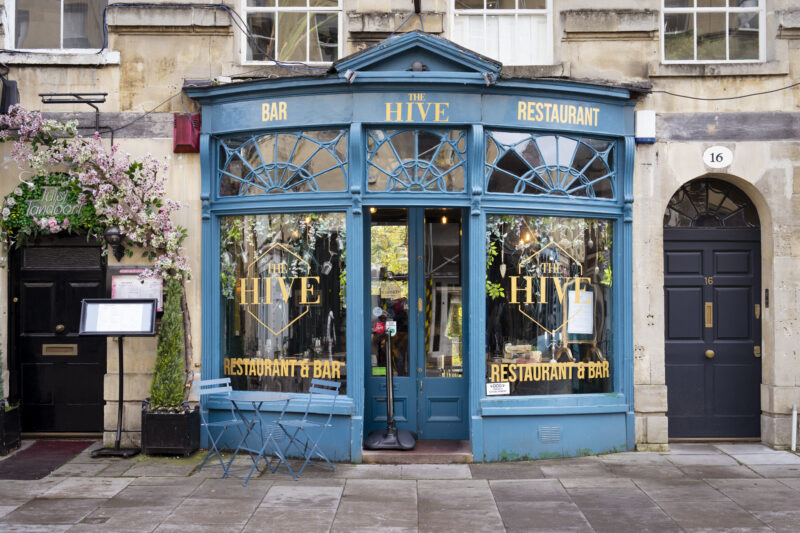
Sweet Little Things
Sweet Little Things sees the world through pink glasses. If you're celebrating a birthday or just feel like afternoon tea, this is the place to be. Cakes big or small, cookies, cupcakes and other goodies are presented in a dollhouse setting. We visited the store in Old Bond Street, but you can also visit the one on Lower Borough Walls. If you want to see the bakers at work, head to SLT Upper Borough Walls.
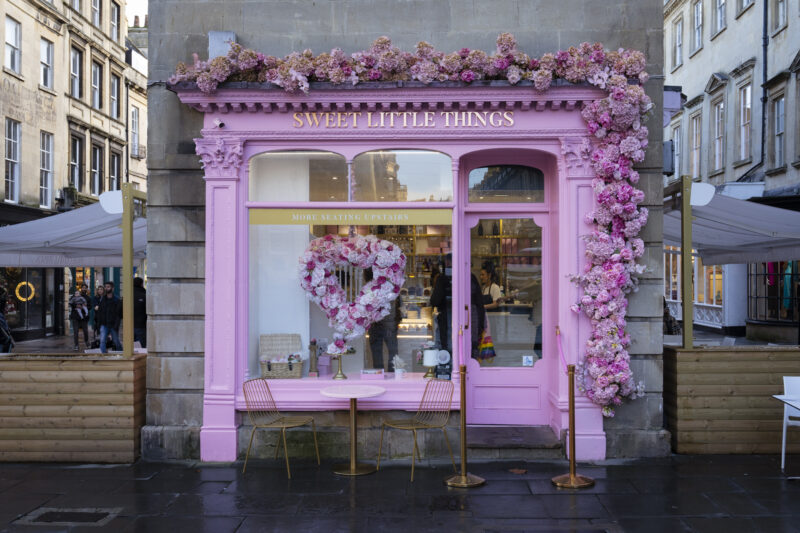
Fudge Kitchen
If you have a sweet tooth, then you should definitely stop by Fudge Kitchen. Fudge is a typical Anglo-Saxon treat prepared with butter and sugar. It looks a bit like sweet, soft toffee. Fudge comes in all shapes, sizes and flavors at Fudge Kitchen, but I am particularly fascinated by the slab fudge that is made right before my eyes. Kitchen Fudge sells only handmade natural fudge, so you won't find any preservatives in your dessert. I am tempted to taste the fresh fudge and leave the shop with Christmas spice fudge for me and salted caramel for Didier. Mmmm, truly decadent!
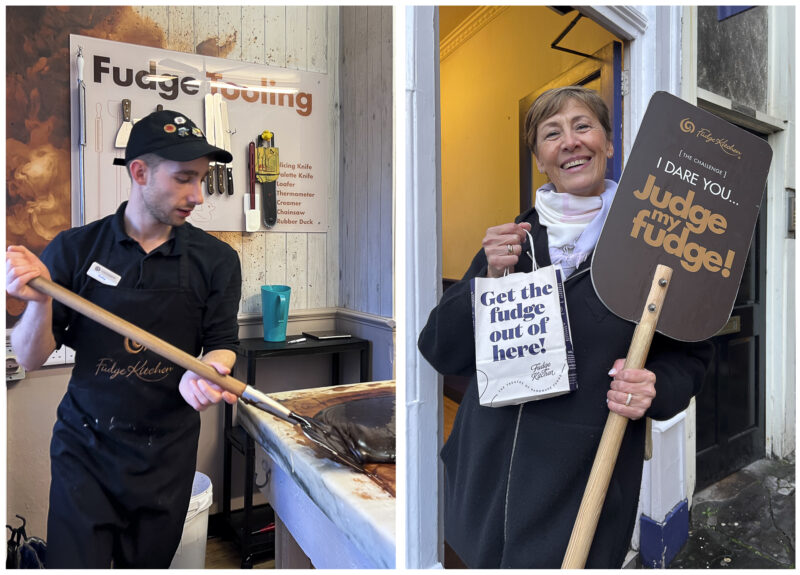
Olé Tapas
We go for lunch to Olé Tapas, a no-frills tapas bar on John Street, located on the second floor upstairs from the leading cheese store Paxton & Whitfield. We are warmly welcomed into the small dining space with its high-top tables, to the notes of hip Spanish pop music.
We begin our culinary tour of Spain with boquerones served on chips and nicely spicy chorizo in red wine. A good start to what turns out to be quite a tasting. Next, we enjoy a delicious plate of baccalao with onion and peppers. The chef insists we also try the tortilla, and the waiter recommends the solomillo alla plancha. The grilled tenderloin from 100% acorn-fed Iberian pig is served with a creamy blue cheese sauce and sprinkled with pimentón de la Vera. So delicious! The chef is on a roll and offers us some croquetas, which will be on the menu as a special the next day. They are stuffed with a cinco jotas ham. Cinco jotas means five stars and is the highest quality grade possible for an Iberico ham. The croquetas are super crispy on the outside with a deliciously creamy center. For dessert, the chef serves us a piece of manchego cheesecake with quince coulis. The dessert is smooth, delicious and not sweet at all. The combination with quinces works really well.
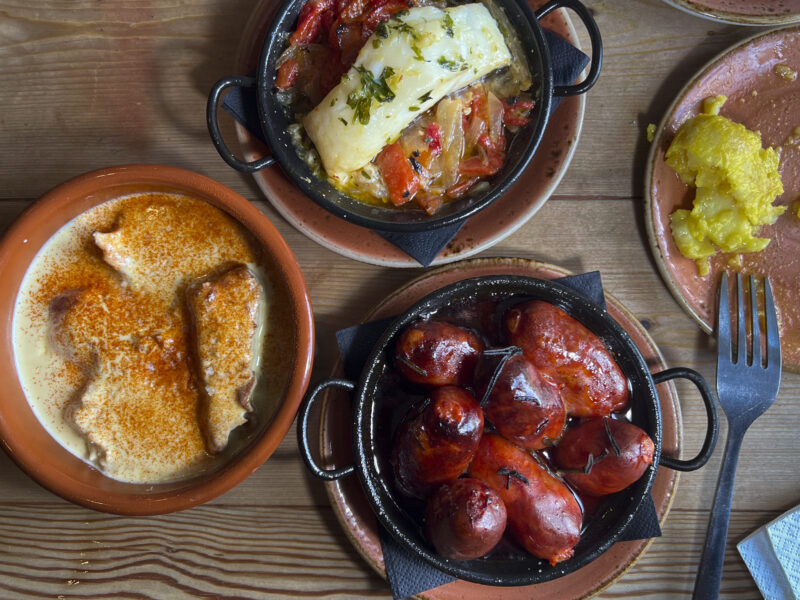
Jacks of Bath
I usually don’t snoop around in souvenir shops but when I pass Jack of Bath, I stop in my tracks. Never before have I seen such a collection of funky teapots. They come in the form of a bathtub, an Aga stove, a sewing machine, a telephone and even a jazz band. I marvel in front of the window and can't resist the temptation to bring home a teapot. I know exactly who I will give it to as a gift.
Jacks of Bath is a family-owned store and is located across from the Roman Baths. In addition to the unique teapots, you will also find a large choice of the adorable Silver Tag Bears and plenty of other trinkets.

As we continue our trip and travel further south, we end up at the Red Lion Freehouse near Stonehenge.